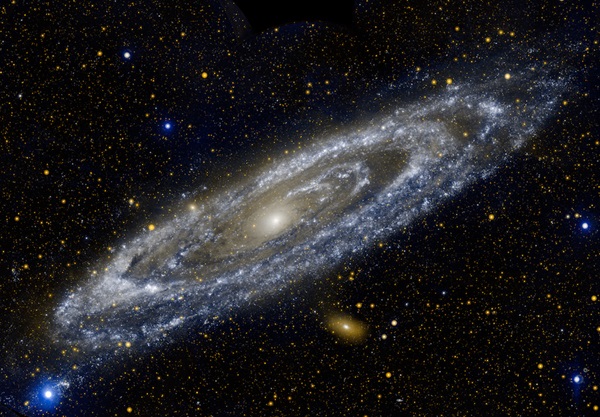This tends to be the case for most supermassive black holes (SMBHs) found throughout the universe. However, sometimes a SMBH can be forced from the center of its host galaxy, particularly if it’s involved in a galactic merger with a bigger counterpart. For example, if a small galaxy merges with a larger one, the smaller galaxy’s SMBH will likely be thrown into a wide orbit around the newly formed galaxy, therefore becoming a ‘wandering’ supermassive black hole. Though astronomers have previously found evidence of these nomadic SMBHs on the outskirts of other galaxies, their overall prevalence is still largely unknown.
But according to a new study published April 24 in The Astrophysical Journal Letters, wandering supermassive black holes may be quite common (and even observable) within many different types of galaxies — including the Milky Way.
To carry out the study, the researchers took advantage of a new, state-of-the-art cosmological simulation called ROMULUS25. This N-body simulation uses an advanced supercomputer called Blue Waters to model how billions of individual particles interact and evolve over time. Though the ROMULUS25 simulation encompasses an astounding volume of over 15,000 cubic Megaparsecs (1 Megaparsec = 3 million light-years), it is still able to resolve the internal structure of galaxies and dwarf galaxies, as well as capture the orbital evolution of SMBHs following galactic mergers.
“It is extremely unlikely that any wandering supermassive black hole will come close enough to our Sun to have any impact on our solar system,” said lead author Michael Tremmel, a postdoctoral fellow at the Yale Center for Astronomy and Astrophysics, in a press release. “We estimate that a close approach of one of these wanderers that is able to affect our solar system should occur every 100 billion years or so, or nearly 10 times the age of the universe.”
So, even though the supermassive black hole at the center of the Milky Way may have a dozen disenfranchised siblings, by the time they could pose a threat to Earth, the Sun will have likely already burnt out. In the meantime, astronomers will continue working hard to definitely prove these wandering Goliaths actually exist. And once they do, the real fun can begin.
A preprint of the new study is available on arxiv.org.











